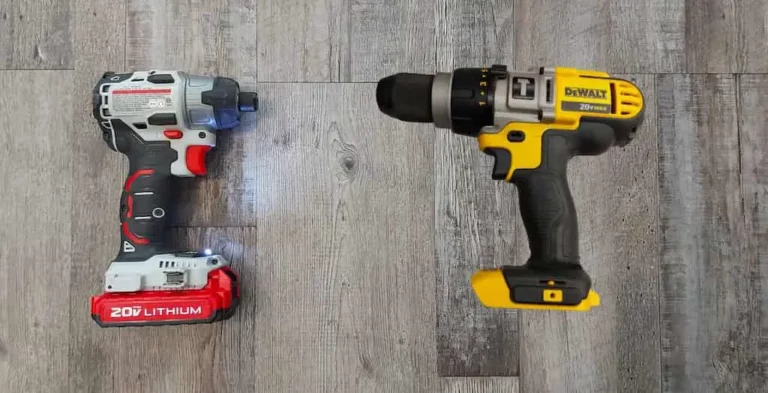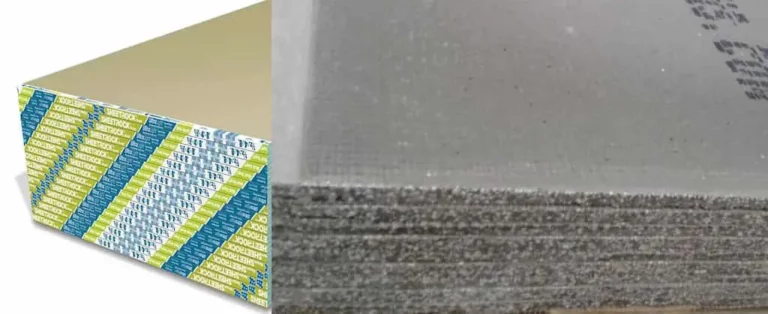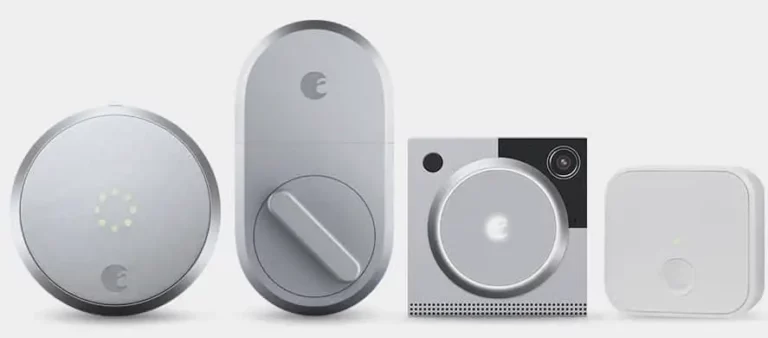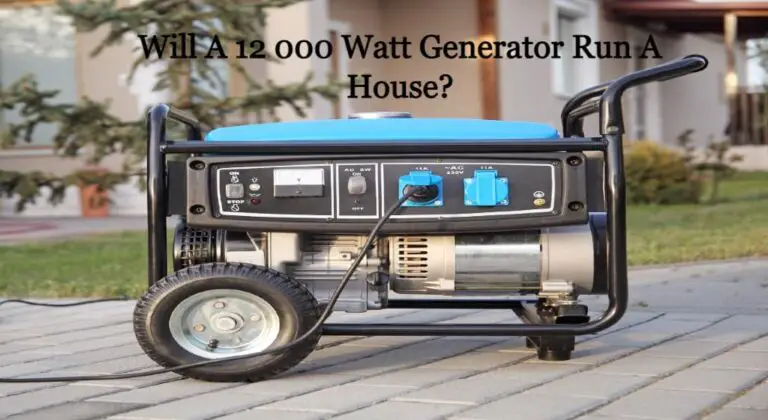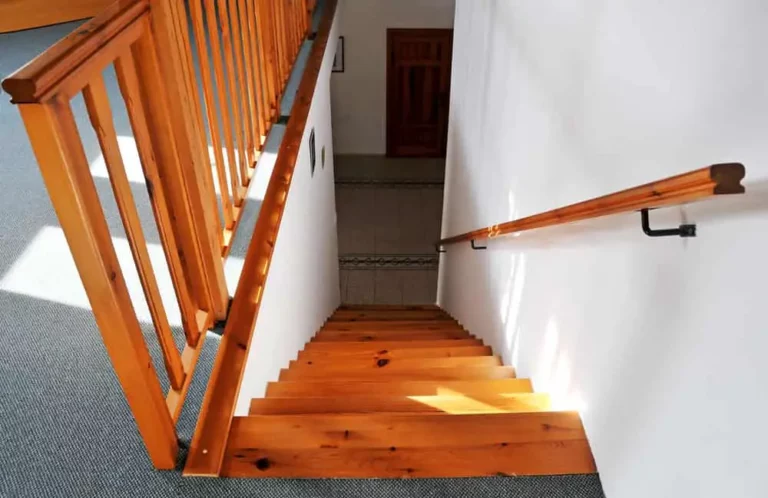How To NOT Slip On Vinyl Flooring: 9 Tips That Work
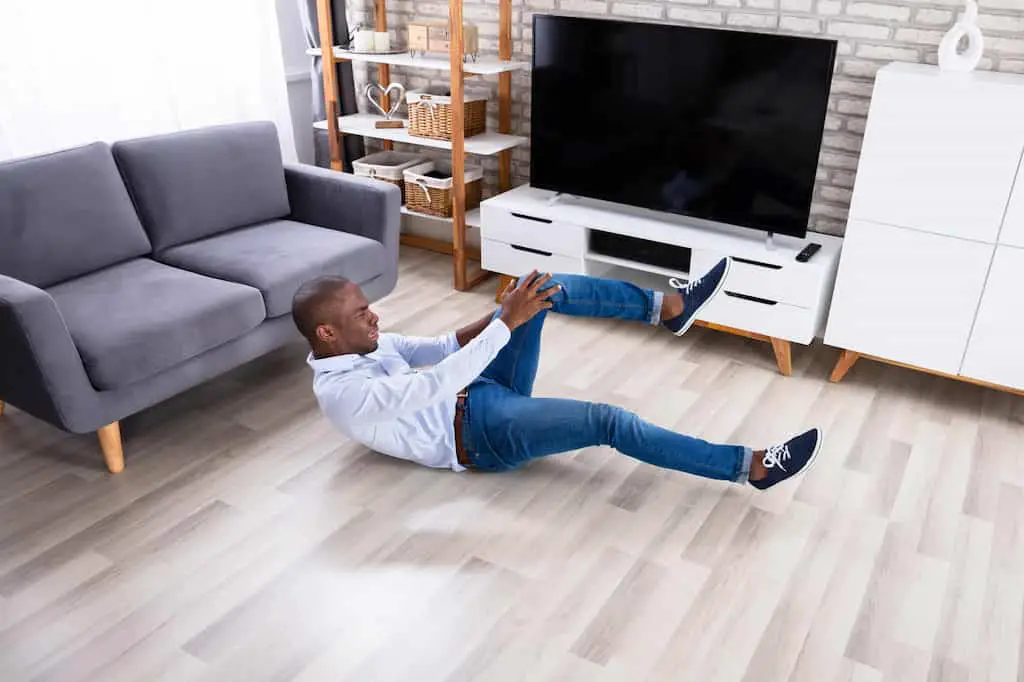
As someone who’s seen their fair share of vinyl flooring slips and spills, I can tell you that this flooring type has a little hazard associated with it. If you’re worried about slipping, I can offer some advice on that topic.
How do you avoid slipping on vinyl flooring? There are several ways you can prevent vinyl flooring from being slippery. These methods include wearing grippy shoes, keeping the floor dry, installing textured vinyl, and having a no-slip mat on your flooring.
If you’re concerned about injuries due to slippery vinyl, an ounce of prevention is worth a pound of cure. These tips below can help you reduce the chances of having a preventable fall happen in your home.
How Do You Avoid Slipping On Vinyl Flooring?
The best way to avoid slipping is to take preventative measures to ensure that the floor isn’t slippery in the first place. That being said, most slips happen for one of three reasons:
- Slippery shoes
- Slippery vinyl
- Wet floors
To help show you how to avoid slipping on your flooring, we’re going to sort our tips via problems. Let’s start learning about prevention and quick fixes for slippery surroundings, shall we?
My Shoes Are Slippery!
We’ve all had a pair of shoes that we loved to pieces, but never really were able to wear too often due to one reason or another. If you’re working in an environment that has vinyl flooring, then your shoes are going to have to reflect that.
Some shoes, particularly high heels and slippers, tend to have a hard time gripping surfaces. If you’re worried about this being a primary concern, there’s really only one fix. You will have to get shoes that are suitable for the flooring you’re on.
The Fix: What Kind Of Shoes Have A Good Grip?
For the most part, if you’re casually trying to prevent a slip at home, wearing sneakers, specialized “grippy socks,” or similar footwear is advisable. At home, there’s no need for work code-enforced footwear. In fact, that’s a little silly.
If you are worried about slipping on vinyl flooring at work, that’s a different story. Many kitchens and specialty workplaces have code-enforced footwear requirements as a way to decrease the chances of a workplace accident. Most rubber-soled kitchen footwear approved by OSHA standards will suffice.
My Old Vinyl Floor Is Slippery!
If you’ve just moved into a house only to find that your vinyl flooring is slippery, you probably already know what you want to do. Most people who are dealing with slippery old vinyl flooring are doing so because the tread on the vinyl wore away or because it’s in dire need of replacement.
It’s true. Replacement is the fastest and easiest way to get rid of the slipperiness. So, that’s what we’re going to suggest.
The Fix: What Kind Of Vinyl Flooring Should I Install?
As you probably already know, there are tons of different types of vinyl flooring. Most vinyl flooring you saw probably was fixated on aesthetics rather than function. In some cases, that can be okay.
However, if you’re remodeling and are concerned about slipping, function should be your priority. These types of vinyl flooring are your best bets:
- No-Slip. No-slip vinyl flooring is specially textured and made with slip-resistant material that is designed to prevent slipping. These types of floors don’t always look the best, but they are the safest. That’s why they are remarkably popular in professional kitchens.
- Skid-Resistant. Slightly less grippy than no-slip flooring is skid-resistant. Skid-resistant flooring typically uses small grooves and textures (like what you find on wood-look vinyl) to help reduce the chances of slipping.
- Slip Resistant. Slip-resistant flooring has similar qualities to no-slip, but tends to be a little on the lighter side of things in terms of its design. In other words, this flooring type is more home-appropriate than many no-slip models would be.
- OSHA-Compliant. If you’re outfitting a workplace like a kitchen or a lab, then you will need to get OSHA-compliant flooring installed in your venue. OSHA-compliant flooring is held to a wide range of safety standards. One of their safety standards, of course, is being as resistant to slipping as possible.
Is Vinyl Flooring Always Going To Be Slippery?
Though you might be dealing with slippery flooring, you can’t exactly judge all flooring of a certain genre based on your own dealings. Most vinyl flooring that is made today has some level of slip-proofing incorporated into its design.
Even if you’re stuck with older vinyl, there are still some options out there that can be used to make your floor a little safer. Saying that vinyl flooring is always going to be a “lost cause” in this respect is not a good idea.
What Should You Do If You Can’t Afford To Replace Your Vinyl Floor?
Let’s say that you have a slippery vinyl floor but you can’t really replace it. That’s not a problem. Just treat your old vinyl as if it were new. There are some quick fixes that you can try in the next part of this article.
My New Vinyl Floor Is Slippery!
If you just installed vinyl flooring and found it to be slippery, chances are you’re a little panicky. You don’t want to slip and break a bone, but you also don’t want to have to replace your new flooring. So, what can you do in order to avoid having serious slips and falls?
As it turns out, there are a couple of things you can do. Let’s start to talk about the most common fixes for slippery new vinyl flooring.
Fix #1: Use Non-Slip Coating Spray.
The easiest way to turn your vinyl flooring into a safer place for you and anyone else is to apply non-slip coating to it. Non-slip coating is a specially-formulated chemical treatment that adds a new layer of grippiness to your flooring, thereby turning a regular floor into a no-slip floor.
Most non-slip coatings are either sprayed on, or “mopped on” using a paintbrush. If you’re an avid DIY-er and want to get a more thorough coating, we strongly suggest going for the “mop” version. However, if you don’t want to deal with additional tools or just are clumsy, a spray will suffice.
Is Non-Slip Coating Toxic?
The safety of your family and housemates should be a priority, and it’s only normal to get a little nervous when you’re chemically treating your home. Thankfully, there’s some good news in this arena.
If you are worried about the issue of toxicity, don’t be. Most are designed to be pet-safe and child-safe once they dry. After application, you should expect your coating to dry within two to six hours.
That being said, not all coatings are made equal. People who are particularly worried about toxins should make the effort to read up on the different types of coatings and seek out the coating they feel is safest for their families and surroundings.
Fix #2: Wash Your Floor!
Believe it or not, the messes that you have on your floor can greatly contribute to its slippery traits. When vinyl first gets installed, it’s possible that you still have leftover dust from the warehouse on top of it. This is a major contributor to slippery flooring, but not the only one.
Regular spills and long-term buildup can be a major contributor to a slippery floor. The grease you spilled from cooking, as well as that weird, oily residue that certain cleaning products leave, are major contributors.
Washing your floors can help get rid of that slickness. Here’s what you need to know when you are trying to wipe away the grease:
- If you suspect your floor is dirty, use regular cleaning products. Regular flooring cleaner, followed up with a rinse of water, is more than enough to get rid of dust and oil from cooking spills.
- Vinyl flooring that appears to have excessive cleaning product buildup can be reset with a mix of dish detergent and water. Before you use the soap and water solution, try wiping down your flooring with water first. If that doesn’t work, then give the mixture a try. A spoonful of dish detergent in a water bucket will do the trick.
- Avoid using waxy substances to clean vinyl flooring. Sure, that wax might look good and give your floor a nice glossy look, but it also can cause your floor to become slippery.
Fix #3: Get A Mat.
There’s nothing saying that you can’t fix a vinyl floor by getting something else under your feet. Though you might not want to get new vinyl, you can still get a mat or carpet that can prevent slipping. A good mat or carpet will grip the floor for you and add a nice touch of style to your home.
If your vinyl flooring is in the kitchen, chances are that you have a lot of moments where you have spills. This is particularly true if you do your dishes in the sink. Having a kitchen mat that you can stand on is a good way to get a grip on your floor and prevent a fall.
If the flooring in question is in your living room or bathroom, you have other options available to you—namely carpets. When choosing a carpet to help prevent slipping, make sure to choose a carpet type that has a rubbery, grippy bottom. Otherwise, you can actually cause a slip.
My Floor Gets Slippery When It’s Wet!
This is a common issue, to the point that most major commercial areas have “WET FLOOR” advisory signs that are put into use during cleaning sessions. Even the grippiest of shoes can have a hard time maintaining traction on a wet, soapy floor.
Thankfully, there are fixes that can help you reduce the chances of having people slip and fall while you’re cleaning your floor.
Fix #1: Warn Others.
Commercial enterprises had a good idea when they decided to use those standing signs as a way to warn others. People who are aware of a slippery or wet floor are going to take their time to make sure they walk around the spill. This, in turn, means that there will be fewer falls in your future.
Obviously, you don’t need to get a special sign if you’re just wiping down your floors in your house’s kitchen. If you’re at home, just vocally warning the kids and the spouse about your wet floor will suffice.
Fix #2: Schedule Your Cleaning Sessions With Care.
A good way to avoid having accidents and slips due to a wet floor is to keep the chances of having people come into contact with it low. To make this easiest for everyone involved, you should consider scheduling your cleaning sessions in a way that reduces the number of people who could come into contact with the floor while it’s still drying.
In malls, staff members tend to wipe down the floors when the venue is closed to the public. At home, the best time to have a wet floor is to do your cleaning while the kids are out at school and roommates are out at work. See where I’m going with this? Using your knowledge of your housemates’ schedules can make cleaning a little safer.
Conclusion
When you’re trying to avoid slips and falls, the best thing you can do for yourself (and those who you live with) is to figure out why your vinyl flooring is slippery. From there, you can figure out the best ways to reduce your floor’s slippery texture and enhance the safety of everyone around you.
If you’re trying to avoid slipping, there’s no “one size fits all” solution. Sometimes, going with multiple solutions is the easiest way to ensure that you get the results and the safety that you need. As long as you do something to help prevent problems from arising, though, you should expect to see good results.
